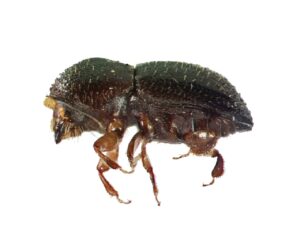When you think fake news, you probably think Donald Trump.
America has become synonymous with the idea of ‘fake news’, but IT has been around forever in different forms, at different times all over the world – think propaganda, eugenics and so on.
The one thing that remains consistent, however, is that fake news generates divisiveness.
South Africa’s complicated and violent history, coupled with a still largely divided society and extreme economic inequality, makes it the perfect breeding ground for social unrest.
Given these conditions, you’re likely to find at least one person who wants to poke the bear and see things fall apart – and if they can make a bit of cash out of the unrest, even better.
Here’s some context…
The Dros rape case that broke a few weeks ago horrified the country. Reporting on it required a high degree of sensitivity towards the victim, as well as a high degree of accuracy when reporting on the perpetrator.
On September 26, 2018, a Twitter account called @Mzansistories tweeted a link to an article on its website, reports News24.
The tweet, pictured below, featured the face of a black man next to a crying white girl under the headline: “Meet a man who raped a 6 years old girl at Dros silverton, Pretora in man’s toilet.” (sic)

The underlying racial inferences was clear from the tweet: a black man had raped a white girl.
The actual accused is a 22-year-old white male, who is currently on trial for the crime.
An investigation has now revealed that the tweet came from William Mahlatse Ramatseba (below), an office administrator at the University of South Africa’s (Unisa) Sunnyside campus.
He is the author fake news sites Mzansistories.com, Allnews.co.za, and several other fake news websites.

Ramatseba and his sister, Grace, have been operating disinformation sites since 2016. They use a number of Facebook groups to distribute the fake stories found on their websites.
The Dros rape tweet was later deleted and replaced with a slightly more accurate story, but the damage had already been done.
Twitter users were quick to take a screenshot of the original tweet and amid the storm of the media’s alleged reticence to name the man, it was used as “proof” that the media was biased along racial lines in its coverage of rape allegations.

Ramatseba started the sites to make money. He and his sister now capitalise on generating divisiveness, reporting lies as truths, and promoting sensationalism.
William and Grace Ramatseba also operated several Facebook pages. These included “Imzansi Extreme” and “Allnews”, both of which were frequently used as platforms to publish links to the stories. A page called “Diary of a Rural Girl” still has a link using the images of the black man and white girl featured in the deleted tweet, alongside a link to the Mzansistories website.
You can see a full list of Ramatseba’s domains here:

And here’s an infographic of Grace and William’s sites, and social media platforms.

You can read more about the investigation that uncovered Ramatseba’s fake news sites here.
Overall, when getting your information from the internet, watch out for these shysters. Also, Google us your friend, and you should use it before spreading content that you are unsure about.
Pop a few keywords from the story into Google and if you don’t see a reputable news source carrying the story, you might want to hold back before sending it to every WhatsApp group in existence.
There’s no excuse for ignorance when we have so much information at our fingertips.
[source:news24]





